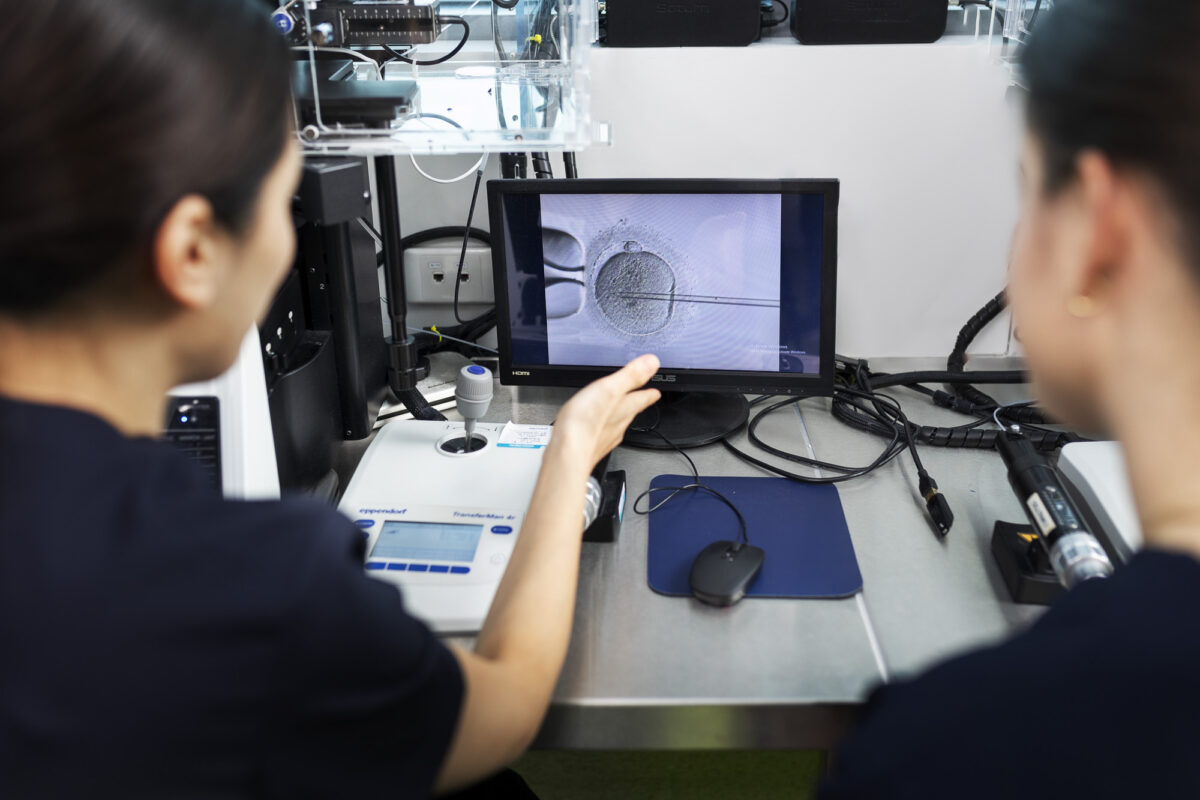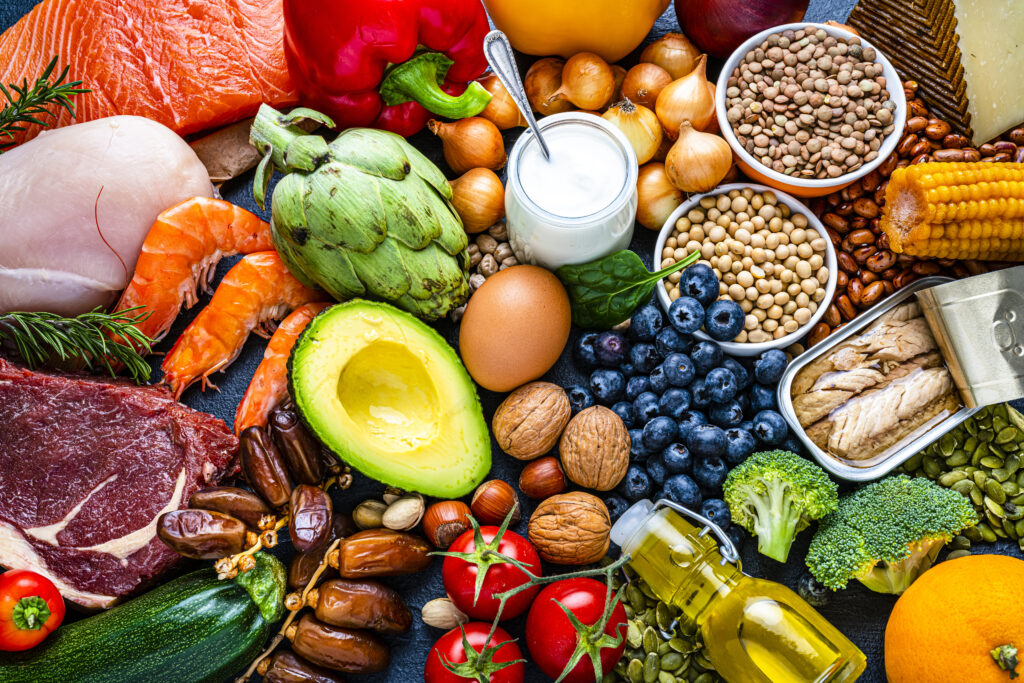The first point to make is that the cost of fertility treatment will always vary from couple to couple. This is because the type of treatment offered depends on the specific cause(s) of a couple’s fertility issues. But even when treatment is similar (e.g. standard IVF), the total cost of treatment can still differ because not every couple will achieve success straightaway. One couple may achieve success in just one treatment cycle while another couple may require two or more cycles. The latter scenario will lead to additional costs for storage of frozen embryos and repeat stimulation cycles or frozen embryo transfers (FET). Further, the cost of a round of treatment and ancillary costs, like storage fees, vary by provider.
In Australia, private fertility clinics typically fall into one of two service models: ‘budget’ or ‘premium’. So how do you choose between them – and is there an alternative to a low-cost or high-cost clinic? Before I answer that, let me explain some important differences between low and higher-cost clinics.
How do budget clinics differ from other providers?
A budget clinic is typically able to offer fertility treatment at low or no out-of-pocket costs by restricting the types of services they provide. For example, they may not offer care for all types of fertility issues, excluding those that incur a higher cost to the clinic. They may also choose not to offer specialised services such as pre-implantation genetic testing (PGT), donor conception (requiring donor eggs, sperm or embryos), surrogacy, or embryo freezing and storage.
Some budget clinics may also only offer standard medication protocols. For example, a woman who is 30 years old, within a specific weight range and has a certain number of eggs, may be assigned ‘Protocol A’ treatment without the option for an individualised treatment plan. Further, the doctors who consult at budget clinics are often on rotation, so you may see a different doctor for each of your appointments, much like an outpatient clinic at a public hospital. Budget clinics may also limit the number of IVF cycles that the clinic can start at any given time, which can lead to significant delays in treatment initiation and sometimes even a missed opportunity to conceive.
In contrast, non-budget clinics are more likely to offer all types of fertility treatment and extend their care to patients with more complex fertility issues. These clinics may also offer additional services such as PGT. The other benefit of these clinics is that you can choose which fertility specialist you want to manage your care. This specialist will provide personalised care specific to your needs and remain with you throughout your entire treatment journey. Lastly, these clinics don’t usually restrict the number of IVF cycles they can run at any one time, meaning you will be able to start treatment when you’re ready, rather than when the clinic can fit you in.
Do success rates vary between low-cost and higher-cost clinics?
Variations in each clinic’s patient populations make it difficult to draw a direct comparison between the success rates of two clinics. For example, some clinics may have a higher proportion of easy-to-treat patients versus patients with complicated fertility issues, which is likely to impact their success rates. Further, clinics can report ‘success’ in different ways, e.g. pregnancy rates may be reported as per egg collection OR per embryo transfer. Similarly, some clinics may report ‘success’ as a positive pregnancy test at the end of a treatment cycle, while others may report success only when a live pregnancy is seen on an early ultrasound (clinical pregnancy) or if a baby is born (live birth rate). Thus, if you are comparing ‘results’ between clinics, it’s important to check that they are using the same definition to report success.
Success rates may also not reflect the different ways patients can journey through IVF. For example, if a couple has all their embryos frozen because the woman is at risk of ovarian hyperstimulation, some clinics may record this stimulated cycle as one where the woman failed to proceed to embryo transfer. This doesn’t reflect that a fresh transfer was deliberately not attempted and that embryos were frozen for use in future FET cycles. Likewise, if pregnancy rates are reported after a FET cycle, it is not always clear if the embryo underwent PGT, which is likely to increase the chance of success.
I can only afford fertility treatment with a budget clinic – is it worth it?
Despite some limitations, there is a definite place for budget fertility clinics in Australia. If cost alone is the only barrier to starting fertility treatment, then a budget IVF clinic may still offer you a better chance of starting a family than trying to conceive on your own.
However, you should be mindful that the prices listed on a clinic’s website may not accurately reflect the total costs that you will incur throughout your care. The following questions are a great place to start when enquiring about treatment costs:
- Are there additional fees for freezing surplus embryos?
- What ongoing costs are associated with storing frozen embryos?
- How much does a frozen embryo transfer cycle cost?
- What fees do you charge for advanced lab procedures, such as intracytoplasmic sperm injection (ICSI) or PGT?
How do Newlife IVF’s fees compare to other providers?
One of the reasons we established Newlife IVF was so that we could offer patients high-quality fertility care at reasonable prices. As a doctor-owned clinic, we do not have the pressure of shareholders nor the need to meet the same profit margins required by larger, corporate fertility clinics. Not only do we offer premium fertility care at an affordable price, but our ‘routine’ treatments also include advanced lab techniques that some clinics may bill as ‘add-ons’ on top of their standard service costs.
Some of these advanced techniques include the use of the EmbryoScope time-lapse system, sequential media and EmbryoGlue for all IVF treatments, as well as egg spindle visualisation for all ICSI procedures. These extra lab techniques help us to select the best embryo to transfer into the womb, improve the chance of the embryo implanting, while also providing more information about egg quality and embryo development. We include these techniques as standard because we want to give our patients the best chance of success, right from their very first treatment. If the first cycle is not successful, we use information gathered from the EmbryoScope and/or egg spindle visualisation to provide our patients with meaningful feedback, and to help inform future treatment decisions.
What additional value does Newlife IVF offer?
At Newlife, we pride ourselves on offering our patients a highly personalised fertility journey. We find our patients’ feedback speaks volumes about the exceptional standard of care we provide. Below are the top three things our patients say differentiate Newlife IVF from other IVF providers:
- Our fertility specialists and supporting clinical, technical and administrative teams all have a wealth of experience in caring for patients who need help building a family.
- Our attentive and caring staff offer regular feedback and support throughout a patient’s treatment journey, so they feel confident we are looking after them and their embryos, which makes them feel less like a ‘number’.
- Our patients appreciate coming to the same fertility clinic and seeing their dedicated doctor for all of their appointments. Since Newlife IVF isn’t located in a large hospital, it feels less clinical and more personal.
How can Newlife IVF help individuals and couples who have not found success elsewhere?
If you’ve not been successful elsewhere, one of our highly-skilled fertility specialists can offer a fresh perspective and a second opinion.
Further, our in-house laboratory was specially designed to reduce volatile organic compounds (VOCs) and harmful blue light in order to provide ideal conditions for embryo growth. We also employ extra lab procedures that you may not have had access to at your previous clinic. These procedures are included as standard to optimise embryo development and give your embryo the best chance of successfully implanting in the womb.
Last word
Our best advice is not to take treatment fees at face value. Not all IVF clinics are equal, and the cost of care doesn’t necessarily equate to the overall value a clinic provides throughout your fertility journey. You can receive premium fertility care at affordable prices by choosing an independent provider with leading fertility specialists and a commitment to best scientific practice. At Newlife IVF, we offer high-quality care at reasonable prices, so you can focus on the task of falling pregnant without the worry of undue financial duress.
You can book an initial fertility consultation with one of our fertility specialists by calling (03) 8080 8933 or booking online.
Further reading
- Newlife IVF’s treatment fees
- IVF success rates – what do the numbers really mean?
- If not IVF, then what? Fertility treatments explained
 In ICSI, a single sperm is injected into the centre of a mature egg.
In ICSI, a single sperm is injected into the centre of a mature egg. What is IVF and how does it work?
What is IVF and how does it work?


